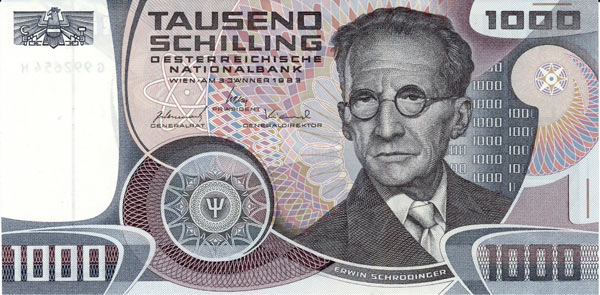
The Schrödinger equation, as it is now known, is the underlying equation of quantum mechanics, the study of the fundamental constituents of nature. In some sense, it is analogous to Newton’s second law describing the evolution of a particle subject to its environment. But what the Schrödinger equation tells us is that particles behave in ways we would have never expected from Newton’s laws alone. It tells us that particles, like electrons, behave like waves. They can overlap, they can interfere, and most importantly their state, meaning the information about their momentum and position, cannot be known exactly on a fundamental level. This is all encapsulated in a mathematical object called the wave function \( \psi \), which tells you the state a particle is in.
In physics, we are always interested in how things change. So how does the wave function change, and, if it changes, what is the reason it does? In classical/Newtonian physics, we would always find that an object changes its state if it increases or decreases its energy via the influence of outside sources: think of the gravitational potential energy affecting the trajectory of a soccer ball in the air.
Realizing that particles behave like waves and that their evolution over time would be influenced by their energy, Erwin Schrödinger, as is told in the physics folklore, made an educated guess for the equation governing all quantum objects:
\( i\hbar \frac{d}{dt}\psi=\hat{H}\psi \).
This is the famous Schrödinger equation! What do all the symbols mean? Well:
- \( i \) is the complex unit number, which means that we are dealing with complex numbers. Great, so already something that is weird…
- \( \hbar \) is the fundamental constant of quantum mechanics. It is like Newton’s constant \( G \) in classical mechanics.
Okay, but now to the fun stuff! We forget about \( i\hbar \), because these are just numbers that do not change and hence do not influence the specific evolution of \( \psi \).
- \( \frac{d}{dt}\psi \) is the derivative of the wave function with respect to time, meaning it encapsulates the evolution of \( \psi \)
- \( \hat{H} \) is a machine that, when inputting a wave function, tells us the energy of the particle described by that wave function. Mathematically we would say that \( \hat{H} \) is a ’quantum operator acting on the wave function returning the energy of that wave function’. There are many quantum operators, but \( \hat{H} \) is a special one, which we call the Hamiltonian.
So in essence what the Schrödinger equation tells us is that
\( \text{evolution of the wave function} \sim \text{energy of the wave function} \).
The fact that the Hamiltonian is an operator is what makes the Schrödinger equation different from Newton’s second law. Operators are not just numbers that multiply the wave function; rather they affect the wave function itself! From a more physical perspective, one can think of an operator ‘poking’ the particles into a certain state, in a certain way. The way the Hamiltonian pokes the wave function is by generating the time translation of it.
All in all we can say that the Schrödinger equation describes the quantum features of nature from which many of our modern technologies have emerged. But most importantly, it has opened up an entire new chapter in humanity’s quest to understand the uncharted universe we live in.